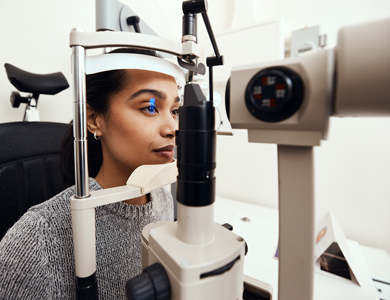
Glaucoma is one of the leading causes of vision loss worldwide, yet many people don’t realize its impact until it begins to interfere with daily life. Because the disease often develops slowly and without noticeable symptoms, it can quietly steal vision over time. What may start as subtle blind spots or difficulty with side vision can eventually make everyday activities much more difficult.
Understanding Glaucoma
Glaucoma is an eye disease that damages the optic nerve - the vital connection between your eye and brain that allows you to see. In most cases, this damage is caused by elevated pressure inside the eye, although glaucoma can also develop with normal eye pressure. Because it typically progresses slowly and without obvious symptoms, many people don’t realize they have glaucoma until significant vision loss has already occurred.
How Does Glaucoma Affect Vision?
Unlike some conditions that blur or distort vision, glaucoma usually begins by damaging side (peripheral) vision. People may not notice these blind spots at first because central vision often remains clear in the early stages. Over time, however, the disease can create tunnel vision - making it difficult to see objects off to the side. If left untreated, glaucoma can eventually affect central vision as well, leading to permanent and irreversible blindness.
Everyday Activities Affected by Glaucoma
Driving requires clear peripheral and central vision. Glaucoma often affects side vision first, which can make it difficult to notice cars, pedestrians, or cyclists approaching from the side. This increases the risk of accidents and may eventually make driving unsafe.
Glaucoma can cause patchy blind spots and blurred vision. This makes it harder to follow lines of text in a book, on a phone, or on a computer screen. Over time, activities like reading for pleasure or working at a computer may require more effort.
Peripheral vision loss can make it difficult to detect obstacles or changes in terrain. This can lead to bumping into objects, tripping, or having difficulty moving safely in crowded or unfamiliar environments.
The Importance of Routine Eye Exams
One of the biggest challenges with glaucoma is that it often develops without pain or noticeable symptoms in its early stages. By the time vision changes are recognized, the disease is usually advanced. Routine comprehensive eye exams are the best defense, as they allow eye doctors to:
Measure eye pressure
Examine the optic nerve for damage
Check for changes in vision through visual field testing
Early detection means treatment can help slow the progression of glaucoma and protect remaining vision.
Take the Next Step in Protecting Your Eyesight
Glaucoma doesn’t just threaten vision - it can interfere with the way you live your life every single day. From driving to reading to recognizing faces, the effects of glaucoma can be life-altering if left untreated. Regular eye exams are the key to detecting glaucoma early and maintaining independence and quality of life.
Schedule your next eye exam at Bluebonnet Eye Care to protect your sight before glaucoma interferes with the moments that matter most. Visit our office in San Antonio, Texas, or call (210) 696-6500 today.











